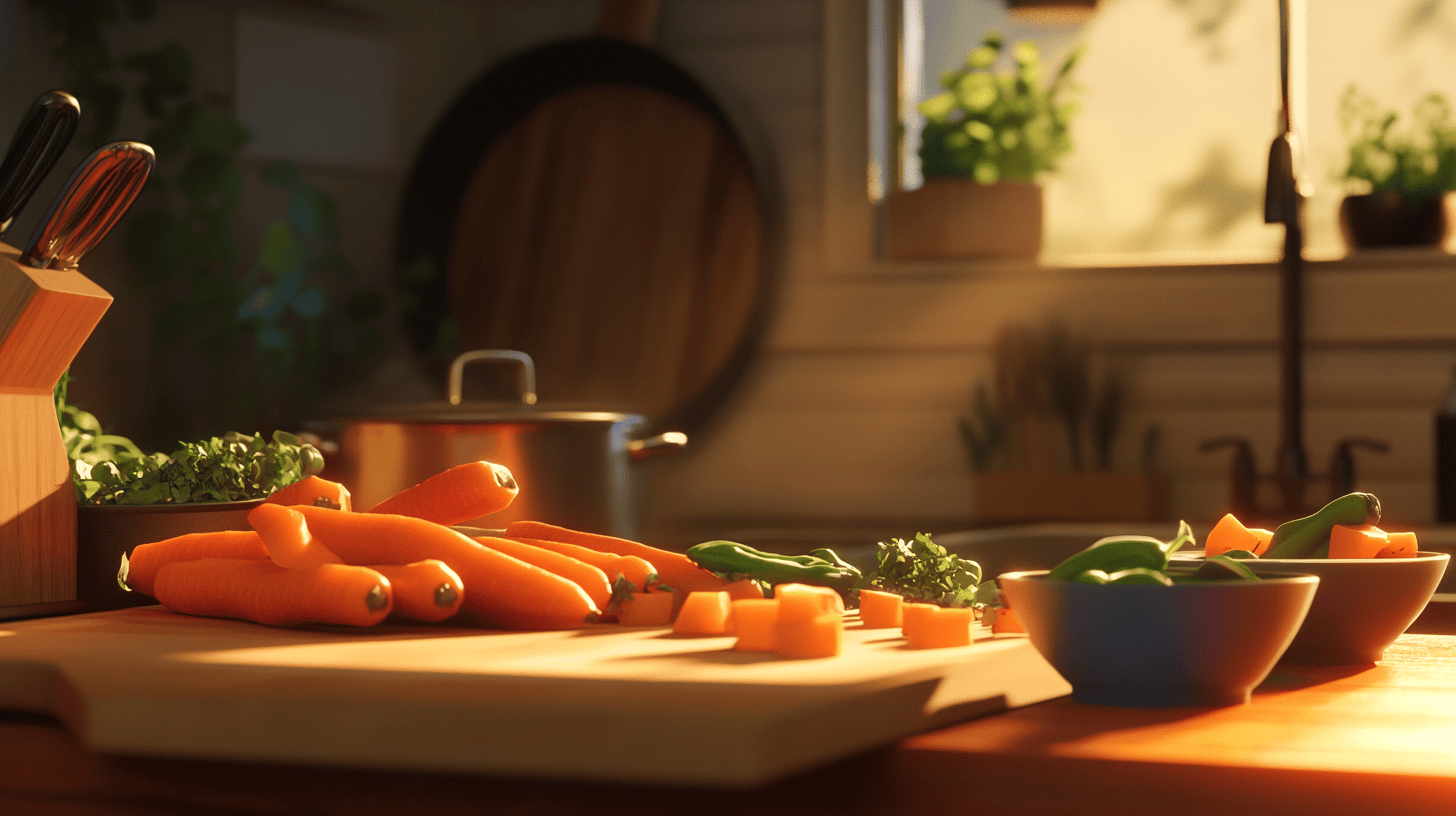If you’re passionate about cooking and want to improve your skills in the kitchen, you’ve come to the right place! In this post, we’ll explore 10 essential techniques that every home chef should master to transform their meals and impressions in the kitchen. Let’s get started!
1. The Power of Mise en Place
The French term “mise en place” means “to put in its proper position.” It involves organizing and preparing all of your ingredients before you start cooking. This will help you stay focused and efficient, and it will also help you avoid those moments of panic when you’re trying to find an ingredient halfway through a recipe. When you have everything within reach and properly prepared, the cooking experience becomes more enjoyable and less stressful.
2. Learn to Cut Like a Pro
The way you cut your ingredients can affect the presentation of your dish, as well as its texture and cooking time. Learn different cutting techniques, such as julienne, brunoise, and chiffonade. Practice with vegetables like carrots and peppers, and you’ll soon realize the difference that good cutting can make in your cooking. Plus, it will make your dish look much more appealing.
3. Temperature Control
Understanding temperature control is crucial in cooking. Different cooking methods, such as searing, grilling, and baking, require different temperatures to achieve the best results. Learning how to use your pans and utensils properly is essential. Use a cooking thermometer if necessary to achieve perfect cooking for meats and pastries. This technique not only ensures food safety but also guarantees incredible flavor.
4. Master the Use of Herbs and Spices
Herbs and spices can make all the difference between an ordinary dish and a masterpiece. Experiment with different combinations and find out which flavors work best with your recipes. Fresh herbs, such as basil, cilantro, and parsley, have more intense flavors than their dried counterparts. Use them generously! Also, don’t be afraid to experiment; a little creativity can take your recipes to the next level.
5. Sear and Deglaze Technique
To sear means to brown the surface of food, creating a crispy, flavorful outer layer. After searing the meat, you can deglaze the pan with wine, stock, or another liquid to loosen any flavor particles that are stuck to the bottom. This creates a rich, complex sauce that adds depth to your dishes.
6. Learn How to Make Homemade Broths
A good stock is the basis for many delicious recipes. Learning how to make your own homemade stock, whether it’s beef, chicken or vegetable stock, can transform your dishes. The process is simple: boil bones or vegetables in water for a few hours. The end result is a nutritious and flavorful stock that you can use in soups and risottos, or as a base for sauces.
7. Low Temperature Cooking Techniques
Cooking at lower temperatures for longer periods, a popular technique among chefs, can result in incredibly tender meats and much more flavorful dishes. This technique is often used on meat and fish, and allows the flavors to develop slowly, resulting in a dish that is truly an explosion of flavor.
8. The Art of Emulsifying
Emulsions are mixtures of two liquids that don’t normally mix, such as oil and water (or vinegar). Learning how to make emulsions, such as mayonnaise or vinaigrette, can take your salads and dishes to the next level. Use methods like blending in a blender or food processor to create these creamy and delicious combinations. They not only enhance the flavor, but also the presentation of your dishes.
9. Roasting and Grilling Techniques
Learning how to properly grill and broil is essential, as these methods are used for most proteins and vegetables. Especially when grilling, it’s important to properly preheat the grill to prevent food from sticking. And in the oven, knowing the ideal cooking time for different foods will help prevent them from turning out dry or undercooked.
10. The Final Touch: Assembling the Plate
Presentation is just as important as flavor. When serving, think about how you can arrange the dish in an attractive way. Use different colors and textures to create a visual appeal. A simple fresh herb or a drizzle of olive oil can transform the look of your dish. Remember, taste is where we see! A good presentation can create even more anticipation and desire for the dish you prepared with so much love.
### Conclusion These 10 techniques are the foundation for any home chef looking to take their cooking to the next level. With time, practice, and creativity, you will not only improve your skills, but you will also have a lot more fun in the kitchen. Don’t be afraid to make mistakes; every mistake is an opportunity to learn and improve. Experiment, try new things, and most of all, enjoy the process of cooking! And remember, the kitchen is a place of creativity – leave your mark and make the most of your experiments!
### Call to Action Did you like the tips? Try some of these techniques in your next meal and share your experience in the comments! If you have other kitchen tips, we would love to hear from you too. Let's cook together and transform our culinary experience!


